Events
| Name | organizer | Where |
|---|---|---|
| MBCC “Doing Business with Mongolia seminar and Christmas Receptiom” Dec 10. 2025 London UK | MBCCI | London UK Goodman LLC |
NEWS
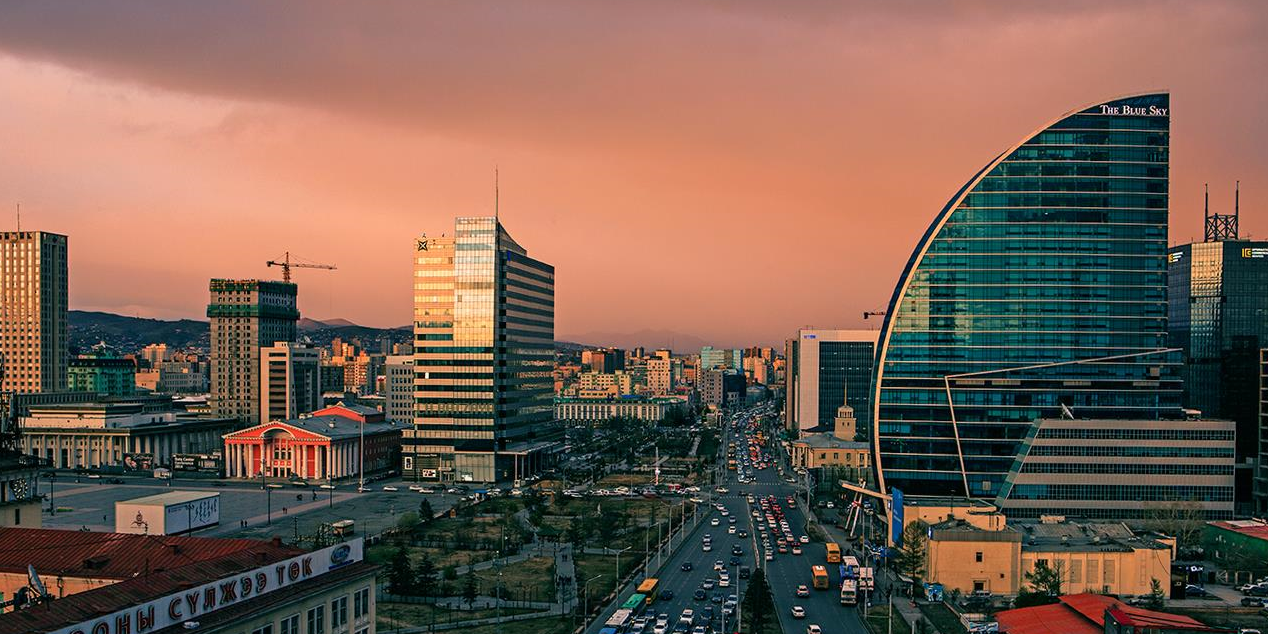
Quality of life in Mongolia www.montsame.mn
Ulaanbaatar /MONTSAME/ The ‘Vision-2050’ is a policy document, which was formulated by a working group comprising of 1500 people, including scholars, experts and state secretaries of 13 ministries, heads of some government agencies, authorities of universities and representatives of non-government organizations. According to the Prime Minister's order No: 52 dated April 30, 2019, the working group analyzed development stages of the past 30 years of Mongolia and formulated the policy document that will define long and mid-term development policy until 2050. We are presenting 9 fundamental goals of the development policy in detail.
Improving quality of life and broadening middle class is one of the nine fundamental goals. As of 2018, Mongolia has a population of 3.2 million; average annual population growth rate is 1.9 percent and average life expectancy at birth is 70.2.
Mongolia is ranked at 136th by its population out of 232 countries, at 66th by birth rate and at 143rd by average life expectancy. Average life expectancy gap between men (66.1) and women (75.8) is 9.7 years and men’s average life expectancy is increasing slowly.
Children aged between 0-14 make up 30.9 percent of total population, elders aged 65 years and over make up 3.9 percent and people aged between 15-64 make up the remaining 65.2 percent. According to calculation made by the National Statistical Office in 2015, Mongolia’s population is expected to reach 5.4 million by 2050 and average annual population growth rate will be at around 1.8 percent.
For the living standard, 28.4 percent of total population is living poor below the poverty line as of 2018. However, the scope of poverty decreased by 1.2 percentage points from the previous year.
Furthermore, it is remaining the same, as no positive results have occurred in basic indicators for employment such as involvement rate of working force and employment rate. It shows that employment promotion policy and actions are not making positive results in basic indicators of labor market.
In addition, micro and small sized enterprises are prevailing in Mongolia’s economy. Regarding the number of employees, 86.2 percent of them have 1-9 employees, 6.0 percent of them have 10-19 employees, 4.9 percent of them have 20-49 employees and the remaining small percent has 50 and over employees.
In order to upgrade business environment, they asked the Government to pay priority attention on easing tax burden and giving preference through proper policy, reducing loan interest, easing process for loan providing service of banking and financial organizations, increasing domestic investment, eliminating corruption and bureaucracy as well as creating fair competition and favorable business environment.
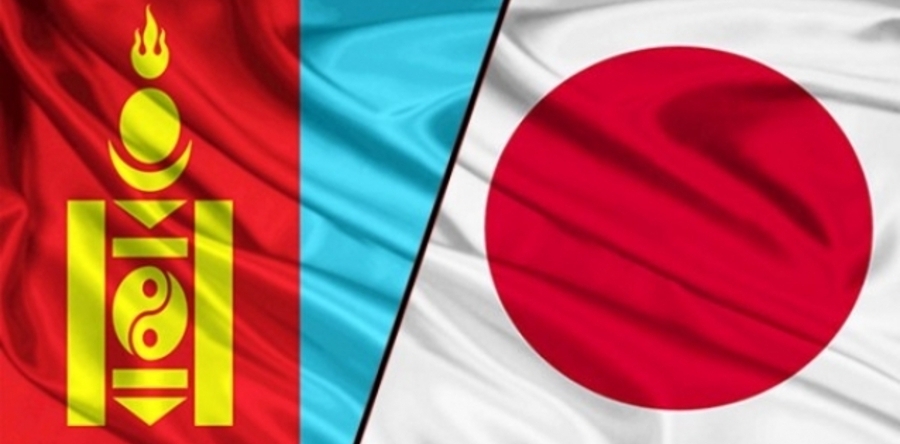
Ambassador of Japan pledges to increase Mongolian exports to Japan www.montsame.mn
Ulaanbaatar /MONTSAME/. On January 20, Minister of Foreign Affairs of Mongolia D.Tsogtbaatar met with Japanese Ambassador to Mongolia Hiroyuki Kobayashi to congratulate him on presenting his diplomatic credentials and assuming office.
Highlighting that the bilateral relations and cooperation between Mongolia and Japan have been developing to a high level of strategic partnership, Minister D.Tsogtbaatar noted the importance of intensifying the economic relations of two countries, particularly focusing on the effective implementation of the Mongolia-Japan Economic Partnership Agreement (EPA) and boosting trade and investment. The sides also exchanged views on regional and international issues of mutual concern.
After remarking that he is delighted to be appointed to Mongolia for the third time, Ambassador Hiroyuki Kobayashi pledged to maintain close cooperation with Mongolia on reinforcing the strategic partnership between Mongolia and Japan and expanding trade and investment ties, including growth of Mongolian exports to Japan.
The Ambassador also expressed his willingness to launch the preparation works of celebration of the 50th anniversary of diplomatic relations between Mongolia and Japan, which will be marked in 2022.
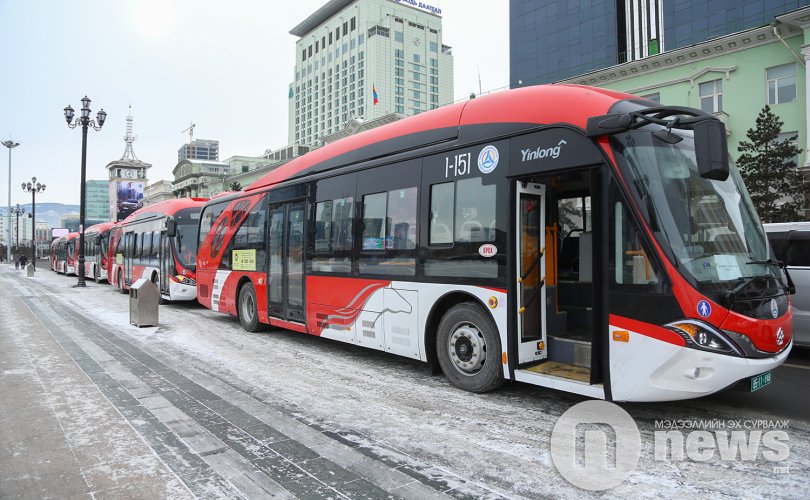
Electric buses start running in Ulaanbaatar www.news.mn
Mongolia has imported 10 electric buses from China for transportation in Ulaanbaatar. The electric buses began operation earlier today (20 January) on a three month-long trial. According to officials, the buses can handle -50 and -60 Celsius temperatures and can be recharged after 15-20 minutes. The buses have 36 seats and run 200 km when fully charged.
The Ulaanbaatar City Administration is committed to decreasing air-pollution in the Mongolian capital; replacing the old diesel buses is a step in that direction.
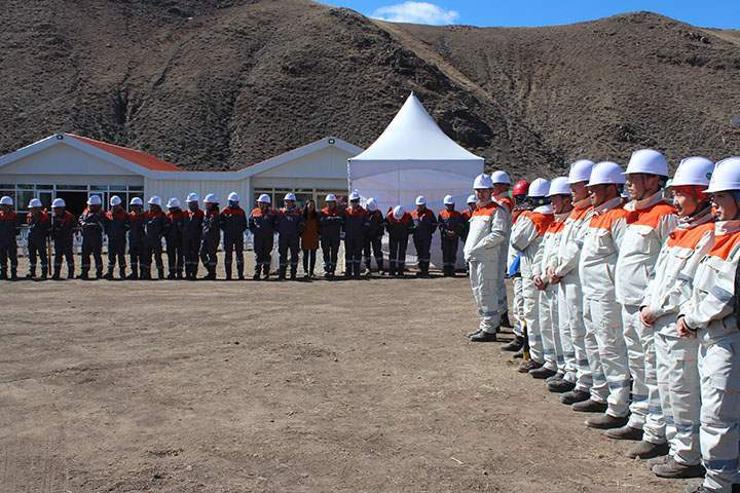
Number of foreign workers with labor contract in Mongolia decreased by www.montsame.mn
Ulaanbaatar /MONTSAME/ At the end of December 2019, 4.6 thousand foreign workers from 95 foreign countries were employed with labor contract in Mongolia including persons in employment work for pay or profit and persons in volunteer work without pay or profit.
Of all foreign workers with labor contract in Mongolia, 3.8 thousand (82.5 percent) were male and 0.8 thousand (17.5 percent) were female.
By the age groups of foreign workers, the highest percentage or 16.5 percent was persons aged 45-49 years and the lowest percentage or 0.4 percent was persons up to aged 20 years.
From the previous quarter, the number of foreign workers decreased by 5.8 thousand people or 55.6 percent. Such as, number of foreign workers in seasonal activities of mining and quarrying sector is decreased by 1.8 thousand (50.5 percent), the number of foreign workers in construction sector decreased by 1.7 thousand (89.6 percent), and the number of foreign workers in wholesale, retail trade and repair of motor vehicles and motorcycles sector decreased by 1.2 thousand (61.7 percent).
Of total foreign workers by the end of 2019, 1.8 (38.3 percent) thousand foreign workers were working in mining and quarrying sector, 990 (21.5 percent) workers were working in education sector, 759 (16.5 percent) workers were working in wholesale and retail trade, repair of motor vehicles and motocycles sector, 267 (5.8 percent) workers were working in processing industries sector, 197 (4.3 percent) workers were working in construction sector, 156 (3.4 percent) workers were working in administrative and support service activities sector, 151 (3.3 percent) workers were working in transportation and storage sector, 58 (1.3 percent) workers were working in activities of extraterritorial organizations and bodies sector, 56 (1.2 percent) workers were working in other service activities sector and 2.0 (4.4 percent) thousand foreign workers are working in other sectors.
From foreign workers in Mongolia, 36.2 percent is from China, 8.8 percent is from Australia, 7.1 percent is from Russian Federation, 6.1 percent is from South Korea, 5.3 percent is from the USA, 4.3 percent is from Vietnam, 3.7 percent is from Philippines, 3.5 percent is from South Africa, 2.8 percent is from Great Britain, 2.6 percent is from Canada, 2.0 percent is from Japan, 1.9 percent is from India, 1.5 percent is from Indonesia and remaining 14.2 percent is from other countries.
National Statistical Office

Savings in foreign currency increased by MNT464.2 billion from previous year www.montsame.mn
Ulaanbaatar/MONTSAME/. At the end of December 2019, the time deposit in domestic currency amounted to MNT 11.1 trillion, showing an increase of MNT 356.9 billion (3.3%) from the previous month and MNT 923.0 billion (9.1%) from the end of the previous year.
The decomposition of total time deposit in domestic currency shows that 84.7 percent (MNT 9.4 trillion) were individual is deposits and 15.3 percent (MNT 1.7 trillion) were corporations’ deposits.
The time deposits in foreign currency amounted to MNT 3.5 trillion, showing an increase of MNT 464.2 billion (15.4%) from the previous year.
Source: National Statistics Office of Mongolia
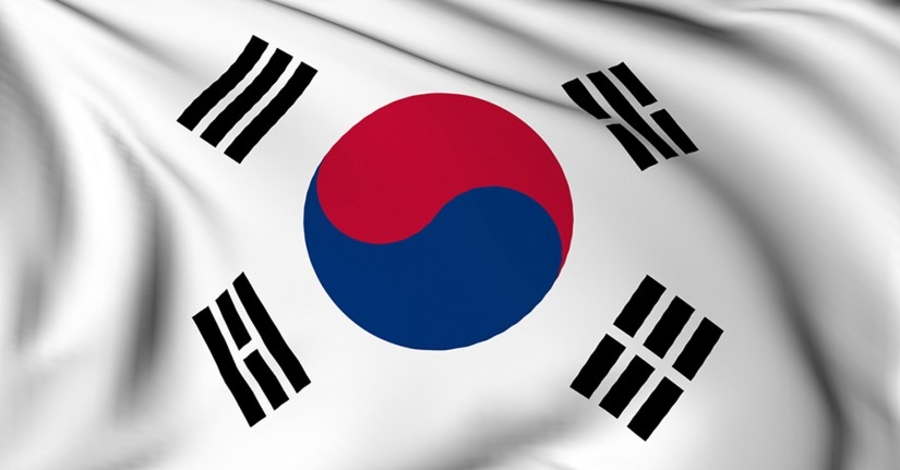
S. Korea to focus on promoting economic cooperation with Russia, Mongolia www.en.yna.co.kr
SEJONG, Jan. 20 (Yonhap) -- South Korea will focus on promoting economic cooperation this year with Russia, Mongolia and other countries located north of the Korean Peninsula in line with the diplomatic initiative of its New Northern Policy, Finance Minister Hong Nam-ki said Monday.
Hong made the remarks at a meeting with economy-related ministers earlier in the day.
South Korea "will bolster economic cooperation with northern countries to pull off accomplishments from the New Northern Policy," Hong told the meeting.
President Moon Jae-in set up the Presidential Committee on Northern Economic Cooperation in May 2017 to spearhead a diplomatic campaign to strengthen economic and other cooperation with nations in the northern region, including those in Eurasia.
In 2020, South Korea celebrates the 30th anniversary of establishing its diplomatic relations with Russia and Mongolia.
Under the initiative, South Korea will expand its cooperative scheme with Russia in the sectors of railroad, electricity, gas, ports, agriculture and fisheries, the finance ministry said.
South Korea will also seek to sign bilateral free trade deals with countries located north of the Korean Peninsula, according to the ministry.
South Korea will spare no efforts to help conclude a mega Asia-Pacific trade deal by the end of this year by forging deeper ties with the Association of Southeast Asian Nations (ASEAN), Hong said.
ASEAN and its dialogue partners -- South Korea, China, Japan, Australia and New Zealand -- effectively reached an agreement on the Regional Comprehensive Economic Partnership (RCEP) in November last year, with the goal of signing the pact within this year.
The agreement came after the participating nations launched their talks in 2013 on a deal that would create a mega economic bloc accounting for half of the global population and one-third of the world's gross domestic product.
The participation of India, which did not join the agreement, will be decided before the deal's formal signing slated for 2020.
Although nuclear diplomacy between the United States and North Korea has been stalled, South Korea will make full preparations to promote economic cooperation with Pyongyang if there is progress in nuclear diplomacy, Hong said.
kdh@yna.co.kr
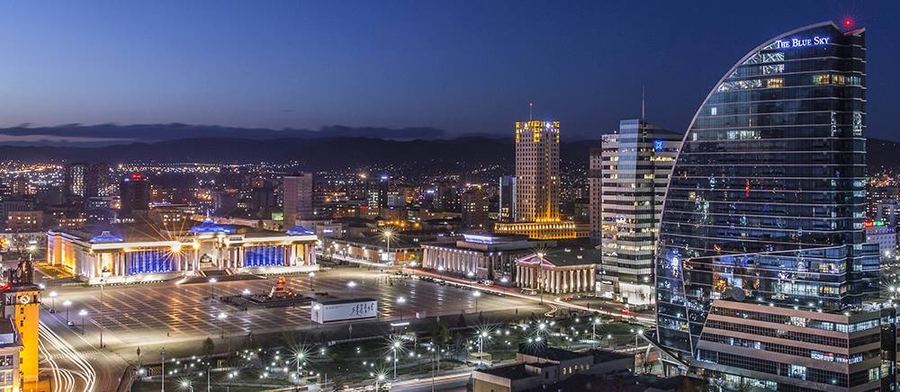
Cable car project discussed with French company www.montsame.mn
Ulaanbaatar /MONTSAME/ To improve public transport bus services and increase their variety and accessibility and reduce traffic congestion, a cable car transport project is planned to be implemented in Ulaanbaatar and a working group was set up in preparation for the project as per the Capital City Governor’s order No. A/198.
Under the project, a cable car system with an hourly capacity of 3,000 passengers and a ride duration of 16 minutes is planned to be commissioned between two parts of the capital city. In connection with this, Governor of the capital city and Mayor of Ulaanbaatar S.Amarsaikhan on January 15 met with representatives of the Poma company of France to discuss the cable car transport project.
The sides exchanged views on the next possible routes and had in-depth conversation about how long the project implementation could take following the authorization of necessary funds. Also, at the meeting, Governor S.Amarsaikhan expressed his willingness to introduce cable car transport in not only a single route, but many more parts of the city.
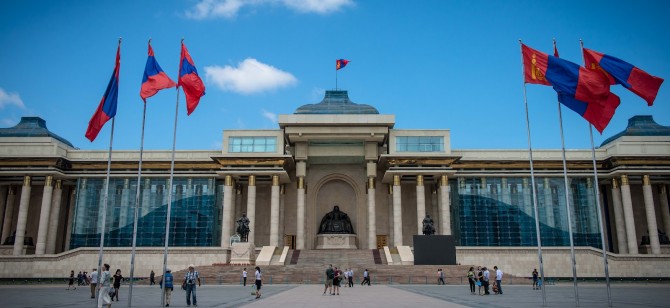
Tax revenue increased by 18.8 percent compared to previous year www.montsame.mn
Ulaanbaatar/MONTSAME/. In 2019, general government budget revenue amounted to MNT 11.9 trillion by preliminary results, with MNT 10.8 trillion of which accounted for equilibrated revenue. For the 2019 general government budget revenue structure, 90.5% was accumulated from equilibrated revenue. Total expenditure and net lending amounted to MNT 11.4 trillion, representing a deficit of MNT 627.8 billion in the equilibrated balance.
In December 2019, equilibrated revenue and grants of the General government budget reached MNT 1.1 trillion, increased by MNT 271.7 billion or 32.2% from the previous month and total expenditure and net lending reached MNT 2.2 trillion, increased by MNT 1.3 trillion or 2.5 times more from the previous month.
General Government budget revenue was comprised of 81.7% of tax revenue, 8.8% of non-tax revenue, 8.7% of the future heritage fund and 0.8% of the stabilization fund.
In 2019, tax revenue reached MNT 9.7 trillion, increased by MNT 1.5 trillion or 18.8% compared to the previous year. This growth was mainly affected by increases of MNT 460.8 billion or 22.1% in income tax, MNT 355.0 billion or 21.9% in social security revenue, MNT 288.0 billion or 13.1% in value added taxes, MNT 205.2 billion or 28.8% in other taxes, MNT 109.0 billion or 14.4% in excise taxes and MNT 107.7 billion or 15.8% in revenue from foreign activities.
In 2019, 26.1% of the total tax revenue was accumulated from income tax, 25.5% from value added tax 20.3% from social security contributions, 11.2% from other taxes, 8.9% from excise taxes, 8.1% from foreign activity revenues. The 2019 income tax revenue increased by 0.7 points, other taxes by 0.6 points and social security contributions by 0.5 points, while value added tax decreased by 1.3 points, excise taxes revenue by 0.3 points and foreign activity revenues 0.2 points as compared to the previous year.
In 2019, general government budget expenditure and net lending increased by MNT 2.2 trillion or 23.9% as compared to the previous year, totaling up to MNT 11.4 trillion by preliminary results. This was primarily affected by an increase of MNT 859.7 billion or 11.7% in current expenditure, MNT 136.2 billion or 51.0% in net lending and MNT 1.2 trillion or 75.3% in capital expenditure.
General government budget expenditure and net lending was comprised 71.8% of current expenditure, 24.7% of capital expenditure and 3.5% of net lending. Current expenditure was comprised 48.6% expenditure on goods and services, 37.3% current transfers, 10.5% interest and 3.6% of subsides.
By preliminary results of 2019, capital expenditure amounted to MNT 2.8 trillion, increased by MNT 1.2 trillion or 75.3% from previous year. Equipment expenditure decreased by MNT 22.7 billion or 10.8% compared to previous year, whereas construction expenditure increased by MNT 1.1 trillion or 2.1 times more, renovation expenditure increased by MNT 77.9 billion or 91.7%, other capital expenditure decreased by MNT 22.7 billion or 7.3%, strategic resource expenditure decreased by MNT 7.4 billion or 61.0% resulting an increase in the total capital expenditure.
Of the total capital expenditure, 75.1% accounts for construction expenses, 11.8% for other capital expenses, 6.6% for equipment expenses, 5.8% for renovation expenses and 0.7% for strategic resource expenses. The 2019 construction expenses increased by 13.4 points and renovation expenses by 0.5 points, while other capital expenses decreased by 7.5 points, equipment expenses by 6.5 points and strategic resource expenses by 0.1 points as compared to the previous year.
Source: National Statistics Office of Mongolia
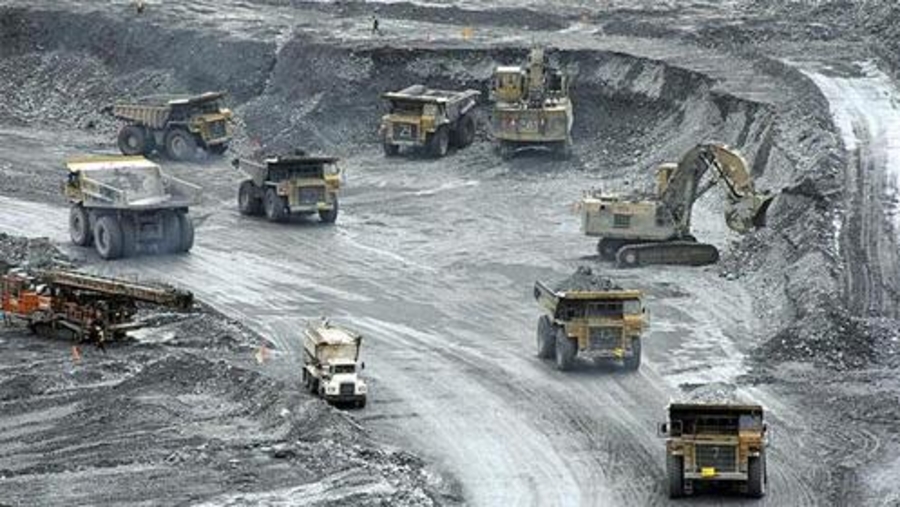
Mongolia’s foreign trade surplus reaches USD 1.5 billion in 2019 www.montsame.mn
Ulaanbaatar/MONTSAME/. In 2019, Mongolia traded with 152 countries from all over the world and total trade turnover reached USD 13.7 billion, of which USD 7.6 billion were exports and USD 6.1 billion were imports. Total foreign trade turnover increased by USD 860.6 (6.7%) million, of which exports increased by USD 608.0 million (8.7%) and imports increased by USD 252.6 million (8.0%) compared to the same period of previous year.
Mongolian foreign trade balance has been in surplus since 2014 and foreign trade surplus reached USD 1.5 billion in 2019, increased by USD 355.4 million (31.3%) from previous year.
In December 2019, exports and imports reached to USD 564.2 million and USD 543.6 million, respectively. Compared to the previous month, exports increased by USD 37.3 million and imports increased by USD 24.4 million.
In December 2019, foreign trade surplus reached to USD 20.5 million. Compared to the previous month, foreign trade surplus increased by USD 12.9 million.
In total turnover, trades with two neighbor countries China and Russia have highest shares where trade with China was USD 8.9 billion in 2019, which is 64.4% of total goods turnover and 89.1 percent of exports.
In total export goods to China, 44 percent was coal and 26.4 percent was copper concentrate. While 77.5% of total export goods to the United Kingdom, 76.7% of total export goods to Singapore and 98.8% of total export goods to Switzerland were gold.
In 2019, imports by main countries, China share to 33.6%, Russia share to 28.2%, Japan share to 9.6%, USA share to 4.7% and Korea share to 4.4% of total imports.
Petroleum products share to 55.8% of Russia’s imports, Cars share to 60.9% of Japan’s imports, trucks share to 13.8% of China’s imports and there are many different types of products share to other percent.
The 608.0 million increase in exports from the same period of previous year was mainly due to the increases in exports of USD 288.2 million in bituminous coal and USD 273.9 million in raw or semi-manufactured gold.
Before the discovery of the major mining sites, agriculture was main economic sector of Mongolia. In 2019 by preliminary estimate, Mongolia exported USD 132.2 million meat and meat products, which is USD 17.2 million or 27.4% lower compared to previous year.
Export of washed cashmere increased by USD 46.3 million, while export of combed raw cashmere decreased by USD 9.6 million. Export of both washed cashmere and combed raw cashmere makes up to 4.3 percent of total export.
The USD 252.6 million increase in imports from the same period of previous year was mainly due to USD 46.5 million increase in mineral products imports, especially, USD 92.6 million increase in diesel imports and USD 267.0 million increase in imports of transport vehicles and its spare parts. In 2019, Mongolia imported 94065 vehicles, in which 69472 were cars. Imported cars increased by 5433 or 8.5% from previous year.
Exports of mineral products, textiles and textile articles, natural or cultured stones, precious metals jewelry made up 94.9 percent of total export. On the other hand, 68.9 percent of imports was mineral products, machinery, equipment, electric appliances, transport vehicle and its spare parts and food products.
Source: National Statistics Office of Mongolia
...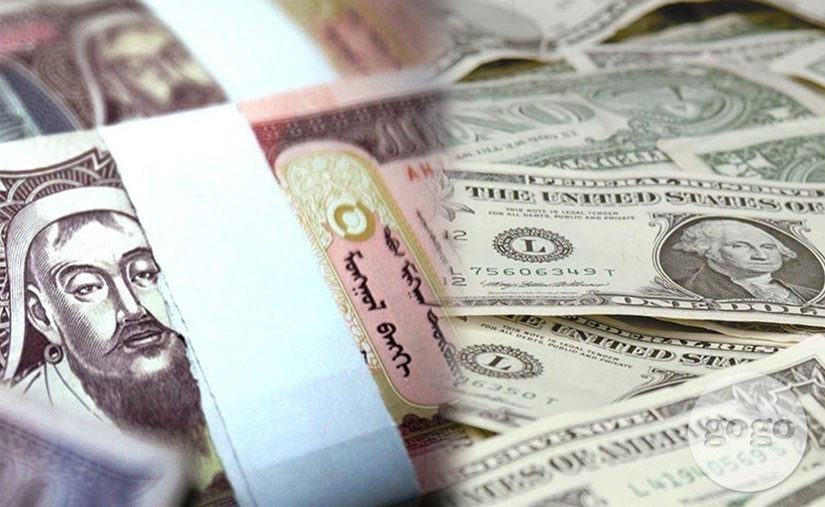
Currency intervention in January exceeds USD 200 million www.zgm.mn
Since the beginning of 2020, the Bank of Mongolia (BoM) provided a total of currency worth USD 213.9 million to stabilize the domestic market. The central bank auctioned USD 38.9 million in the foreign exchange market on Thursday. As the Bank of Mongolia (BoM) reported previously, Mongolia had received several fundings worth less than USD 100 billion since the beginning of 2020. Particularly, the World Bank granted additional funding of USD 100 billion to the country as well as the Asian Development Bank (ADB). In the private sector, XacBank is scheduled to receive USD 100 million in co-financing from the Dutch Entrepreneurial Development Bank (FMO). The five-year tenor of the loan is expected to strengthen XacBank’s long-term funding base and allow the bank to further grow and expand in its focus areas in retail, micro and small and medium enterprises (MSMEs), the bank reported earlier. In terms of funding source, FMO will provide USD 65 million, the OPEC International Development Fund USD 25 million, and the International Economic Cooperation Bank USD 10 million respectively. ADB also provided USD 100 million last year. According to the central bank, the foreign exchange reserves of Mongolia reached USD 4.2 billion, up 20 percent from the same period over the last year.
...- «
- 1
- 2
- 3
- 4
- 5
- 6
- 7
- 8
- 9
- 10
- 11
- 12
- 13
- 14
- 15
- 16
- 17
- 18
- 19
- 20
- 21
- 22
- 23
- 24
- 25
- 26
- 27
- 28
- 29
- 30
- 31
- 32
- 33
- 34
- 35
- 36
- 37
- 38
- 39
- 40
- 41
- 42
- 43
- 44
- 45
- 46
- 47
- 48
- 49
- 50
- 51
- 52
- 53
- 54
- 55
- 56
- 57
- 58
- 59
- 60
- 61
- 62
- 63
- 64
- 65
- 66
- 67
- 68
- 69
- 70
- 71
- 72
- 73
- 74
- 75
- 76
- 77
- 78
- 79
- 80
- 81
- 82
- 83
- 84
- 85
- 86
- 87
- 88
- 89
- 90
- 91
- 92
- 93
- 94
- 95
- 96
- 97
- 98
- 99
- 100
- 101
- 102
- 103
- 104
- 105
- 106
- 107
- 108
- 109
- 110
- 111
- 112
- 113
- 114
- 115
- 116
- 117
- 118
- 119
- 120
- 121
- 122
- 123
- 124
- 125
- 126
- 127
- 128
- 129
- 130
- 131
- 132
- 133
- 134
- 135
- 136
- 137
- 138
- 139
- 140
- 141
- 142
- 143
- 144
- 145
- 146
- 147
- 148
- 149
- 150
- 151
- 152
- 153
- 154
- 155
- 156
- 157
- 158
- 159
- 160
- 161
- 162
- 163
- 164
- 165
- 166
- 167
- 168
- 169
- 170
- 171
- 172
- 173
- 174
- 175
- 176
- 177
- 178
- 179
- 180
- 181
- 182
- 183
- 184
- 185
- 186
- 187
- 188
- 189
- 190
- 191
- 192
- 193
- 194
- 195
- 196
- 197
- 198
- 199
- 200
- 201
- 202
- 203
- 204
- 205
- 206
- 207
- 208
- 209
- 210
- 211
- 212
- 213
- 214
- 215
- 216
- 217
- 218
- 219
- 220
- 221
- 222
- 223
- 224
- 225
- 226
- 227
- 228
- 229
- 230
- 231
- 232
- 233
- 234
- 235
- 236
- 237
- 238
- 239
- 240
- 241
- 242
- 243
- 244
- 245
- 246
- 247
- 248
- 249
- 250
- 251
- 252
- 253
- 254
- 255
- 256
- 257
- 258
- 259
- 260
- 261
- 262
- 263
- 264
- 265
- 266
- 267
- 268
- 269
- 270
- 271
- 272
- 273
- 274
- 275
- 276
- 277
- 278
- 279
- 280
- 281
- 282
- 283
- 284
- 285
- 286
- 287
- 288
- 289
- 290
- 291
- 292
- 293
- 294
- 295
- 296
- 297
- 298
- 299
- 300
- 301
- 302
- 303
- 304
- 305
- 306
- 307
- 308
- 309
- 310
- 311
- 312
- 313
- 314
- 315
- 316
- 317
- 318
- 319
- 320
- 321
- 322
- 323
- 324
- 325
- 326
- 327
- 328
- 329
- 330
- 331
- 332
- 333
- 334
- 335
- 336
- 337
- 338
- 339
- 340
- 341
- 342
- 343
- 344
- 345
- 346
- 347
- 348
- 349
- 350
- 351
- 352
- 353
- 354
- 355
- 356
- 357
- 358
- 359
- 360
- 361
- 362
- 363
- 364
- 365
- 366
- 367
- 368
- 369
- 370
- 371
- 372
- 373
- 374
- 375
- 376
- 377
- 378
- 379
- 380
- 381
- 382
- 383
- 384
- 385
- 386
- 387
- 388
- 389
- 390
- 391
- 392
- 393
- 394
- 395
- 396
- 397
- 398
- 399
- 400
- 401
- 402
- 403
- 404
- 405
- 406
- 407
- 408
- 409
- 410
- 411
- 412
- 413
- 414
- 415
- 416
- 417
- 418
- 419
- 420
- 421
- 422
- 423
- 424
- 425
- 426
- 427
- 428
- 429
- 430
- 431
- 432
- 433
- 434
- 435
- 436
- 437
- 438
- 439
- 440
- 441
- 442
- 443
- 444
- 445
- 446
- 447
- 448
- 449
- 450
- 451
- 452
- 453
- 454
- 455
- 456
- 457
- 458
- 459
- 460
- 461
- 462
- 463
- 464
- 465
- 466
- 467
- 468
- 469
- 470
- 471
- 472
- 473
- 474
- 475
- 476
- 477
- 478
- 479
- 480
- 481
- 482
- 483
- 484
- 485
- 486
- 487
- 488
- 489
- 490
- 491
- 492
- 493
- 494
- 495
- 496
- 497
- 498
- 499
- 500
- 501
- 502
- 503
- 504
- 505
- 506
- 507
- 508
- 509
- 510
- 511
- 512
- 513
- 514
- 515
- 516
- 517
- 518
- 519
- 520
- 521
- 522
- 523
- 524
- 525
- 526
- 527
- 528
- 529
- 530
- 531
- 532
- 533
- 534
- 535
- 536
- 537
- 538
- 539
- 540
- 541
- 542
- 543
- 544
- 545
- 546
- 547
- 548
- 549
- 550
- 551
- 552
- 553
- 554
- 555
- 556
- 557
- 558
- 559
- 560
- 561
- 562
- 563
- 564
- 565
- 566
- 567
- 568
- 569
- 570
- 571
- 572
- 573
- 574
- 575
- 576
- 577
- 578
- 579
- 580
- 581
- 582
- 583
- 584
- 585
- 586
- 587
- 588
- 589
- 590
- 591
- 592
- 593
- 594
- 595
- 596
- 597
- 598
- 599
- 600
- 601
- 602
- 603
- 604
- 605
- 606
- 607
- 608
- 609
- 610
- 611
- 612
- 613
- 614
- 615
- 616
- 617
- 618
- 619
- 620
- 621
- 622
- 623
- 624
- 625
- 626
- 627
- 628
- 629
- 630
- 631
- 632
- 633
- 634
- 635
- 636
- 637
- 638
- 639
- 640
- 641
- 642
- 643
- 644
- 645
- 646
- 647
- 648
- 649
- 650
- 651
- 652
- 653
- 654
- 655
- 656
- 657
- 658
- 659
- 660
- 661
- 662
- 663
- 664
- 665
- 666
- 667
- 668
- 669
- 670
- 671
- 672
- 673
- 674
- 675
- 676
- 677
- 678
- 679
- 680
- 681
- 682
- 683
- 684
- 685
- 686
- 687
- 688
- 689
- 690
- 691
- 692
- 693
- 694
- 695
- 696
- 697
- 698
- 699
- 700
- 701
- 702
- 703
- 704
- 705
- 706
- 707
- 708
- 709
- 710
- 711
- 712
- 713
- 714
- 715
- 716
- 717
- 718
- 719
- 720
- 721
- 722
- 723
- 724
- 725
- 726
- 727
- 728
- 729
- 730
- 731
- 732
- 733
- 734
- 735
- 736
- 737
- 738
- 739
- 740
- 741
- 742
- 743
- 744
- 745
- 746
- 747
- 748
- 749
- 750
- 751
- 752
- 753
- 754
- 755
- 756
- 757
- 758
- 759
- 760
- 761
- 762
- 763
- 764
- 765
- 766
- 767
- 768
- 769
- 770
- 771
- 772
- 773
- 774
- 775
- 776
- 777
- 778
- 779
- 780
- 781
- 782
- 783
- 784
- 785
- 786
- 787
- 788
- 789
- 790
- 791
- 792
- 793
- 794
- 795
- 796
- 797
- 798
- 799
- 800
- 801
- 802
- 803
- 804
- 805
- 806
- 807
- 808
- 809
- 810
- 811
- 812
- 813
- 814
- 815
- 816
- 817
- 818
- 819
- 820
- 821
- 822
- 823
- 824
- 825
- 826
- 827
- 828
- 829
- 830
- 831
- 832
- 833
- 834
- 835
- 836
- 837
- 838
- 839
- 840
- 841
- 842
- 843
- 844
- 845
- 846
- 847
- 848
- 849
- 850
- 851
- 852
- 853
- 854
- 855
- 856
- 857
- 858
- 859
- 860
- 861
- 862
- 863
- 864
- 865
- 866
- 867
- 868
- 869
- 870
- 871
- 872
- 873
- 874
- 875
- 876
- 877
- 878
- 879
- 880
- 881
- 882
- 883
- 884
- 885
- 886
- 887
- 888
- 889
- 890
- 891
- 892
- 893
- 894
- 895
- 896
- 897
- 898
- 899
- 900
- 901
- 902
- 903
- 904
- 905
- 906
- 907
- 908
- 909
- 910
- 911
- 912
- 913
- 914
- 915
- 916
- 917
- 918
- 919
- 920
- 921
- 922
- 923
- 924
- 925
- 926
- 927
- 928
- 929
- 930
- 931
- 932
- 933
- 934
- 935
- 936
- 937
- 938
- 939
- 940
- 941
- 942
- 943
- 944
- 945
- 946
- 947
- 948
- 949
- 950
- 951
- 952
- 953
- 954
- 955
- 956
- 957
- 958
- 959
- 960
- 961
- 962
- 963
- 964
- 965
- 966
- 967
- 968
- 969
- 970
- 971
- 972
- 973
- 974
- 975
- 976
- 977
- 978
- 979
- 980
- 981
- 982
- 983
- 984
- 985
- 986
- 987
- 988
- 989
- 990
- 991
- 992
- 993
- 994
- 995
- 996
- 997
- 998
- 999
- 1000
- 1001
- 1002
- 1003
- 1004
- 1005
- 1006
- 1007
- 1008
- 1009
- 1010
- 1011
- 1012
- 1013
- 1014
- 1015
- 1016
- 1017
- 1018
- 1019
- 1020
- 1021
- 1022
- 1023
- 1024
- 1025
- 1026
- 1027
- 1028
- 1029
- 1030
- 1031
- 1032
- 1033
- 1034
- 1035
- 1036
- 1037
- 1038
- 1039
- 1040
- 1041
- 1042
- 1043
- 1044
- 1045
- 1046
- 1047
- 1048
- 1049
- 1050
- 1051
- 1052
- 1053
- 1054
- 1055
- 1056
- 1057
- 1058
- 1059
- 1060
- 1061
- 1062
- 1063
- 1064
- 1065
- 1066
- 1067
- 1068
- 1069
- 1070
- 1071
- 1072
- 1073
- 1074
- 1075
- 1076
- 1077
- 1078
- 1079
- 1080
- 1081
- 1082
- 1083
- 1084
- 1085
- 1086
- 1087
- 1088
- 1089
- 1090
- 1091
- 1092
- 1093
- 1094
- 1095
- 1096
- 1097
- 1098
- 1099
- 1100
- 1101
- 1102
- 1103
- 1104
- 1105
- 1106
- 1107
- 1108
- 1109
- 1110
- 1111
- 1112
- 1113
- 1114
- 1115
- 1116
- 1117
- 1118
- 1119
- 1120
- 1121
- 1122
- 1123
- 1124
- 1125
- 1126
- 1127
- 1128
- 1129
- 1130
- 1131
- 1132
- 1133
- 1134
- 1135
- 1136
- 1137
- 1138
- 1139
- 1140
- 1141
- 1142
- 1143
- 1144
- 1145
- 1146
- 1147
- 1148
- 1149
- 1150
- 1151
- 1152
- 1153
- 1154
- 1155
- 1156
- 1157
- 1158
- 1159
- 1160
- 1161
- 1162
- 1163
- 1164
- 1165
- 1166
- 1167
- 1168
- 1169
- 1170
- 1171
- 1172
- 1173
- 1174
- 1175
- 1176
- 1177
- 1178
- 1179
- 1180
- 1181
- 1182
- 1183
- 1184
- 1185
- 1186
- 1187
- 1188
- 1189
- 1190
- 1191
- 1192
- 1193
- 1194
- 1195
- 1196
- 1197
- 1198
- 1199
- 1200
- 1201
- 1202
- 1203
- 1204
- 1205
- 1206
- 1207
- 1208
- 1209
- 1210
- 1211
- 1212
- 1213
- 1214
- 1215
- 1216
- 1217
- 1218
- 1219
- 1220
- 1221
- 1222
- 1223
- 1224
- 1225
- 1226
- 1227
- 1228
- 1229
- 1230
- 1231
- 1232
- 1233
- 1234
- 1235
- 1236
- 1237
- 1238
- 1239
- 1240
- 1241
- 1242
- 1243
- 1244
- 1245
- 1246
- 1247
- 1248
- 1249
- 1250
- 1251
- 1252
- 1253
- 1254
- 1255
- 1256
- 1257
- 1258
- 1259
- 1260
- 1261
- 1262
- 1263
- 1264
- 1265
- 1266
- 1267
- 1268
- 1269
- 1270
- 1271
- 1272
- 1273
- 1274
- 1275
- 1276
- 1277
- 1278
- 1279
- 1280
- 1281
- 1282
- 1283
- 1284
- 1285
- 1286
- 1287
- 1288
- 1289
- 1290
- 1291
- 1292
- 1293
- 1294
- 1295
- 1296
- 1297
- 1298
- 1299
- 1300
- 1301
- 1302
- 1303
- 1304
- 1305
- 1306
- 1307
- 1308
- 1309
- 1310
- 1311
- 1312
- 1313
- 1314
- 1315
- 1316
- 1317
- 1318
- 1319
- 1320
- 1321
- 1322
- 1323
- 1324
- 1325
- 1326
- 1327
- 1328
- 1329
- 1330
- 1331
- 1332
- 1333
- 1334
- 1335
- 1336
- 1337
- 1338
- 1339
- 1340
- 1341
- 1342
- 1343
- 1344
- 1345
- 1346
- 1347
- 1348
- 1349
- 1350
- 1351
- 1352
- 1353
- 1354
- 1355
- 1356
- 1357
- 1358
- 1359
- 1360
- 1361
- 1362
- 1363
- 1364
- 1365
- 1366
- 1367
- 1368
- 1369
- 1370
- 1371
- 1372
- 1373
- 1374
- 1375
- 1376
- 1377
- 1378
- 1379
- 1380
- 1381
- 1382
- 1383
- 1384
- 1385
- 1386
- 1387
- 1388
- 1389
- 1390
- 1391
- 1392
- 1393
- 1394
- 1395
- 1396
- 1397
- 1398
- 1399
- 1400
- 1401
- 1402
- 1403
- 1404
- 1405
- 1406
- 1407
- 1408
- 1409
- 1410
- 1411
- 1412
- 1413
- 1414
- 1415
- 1416
- 1417
- 1418
- 1419
- 1420
- 1421
- 1422
- 1423
- 1424
- 1425
- 1426
- 1427
- 1428
- 1429
- 1430
- 1431
- 1432
- 1433
- 1434
- 1435
- 1436
- 1437
- 1438
- 1439
- 1440
- 1441
- 1442
- 1443
- 1444
- 1445
- 1446
- 1447
- 1448
- 1449
- 1450
- 1451
- 1452
- 1453
- 1454
- 1455
- 1456
- 1457
- 1458
- 1459
- 1460
- 1461
- 1462
- 1463
- 1464
- 1465
- 1466
- 1467
- 1468
- 1469
- 1470
- 1471
- 1472
- 1473
- 1474
- 1475
- 1476
- 1477
- 1478
- 1479
- 1480
- 1481
- 1482
- 1483
- 1484
- 1485
- 1486
- 1487
- 1488
- 1489
- 1490
- 1491
- 1492
- 1493
- 1494
- 1495
- 1496
- 1497
- 1498
- 1499
- 1500
- 1501
- 1502
- 1503
- 1504
- 1505
- 1506
- 1507
- 1508
- 1509
- 1510
- 1511
- 1512
- 1513
- 1514
- 1515
- 1516
- 1517
- 1518
- 1519
- 1520
- 1521
- 1522
- 1523
- 1524
- 1525
- 1526
- 1527
- 1528
- 1529
- 1530
- 1531
- 1532
- 1533
- 1534
- 1535
- 1536
- 1537
- 1538
- 1539
- 1540
- 1541
- 1542
- 1543
- 1544
- 1545
- 1546
- 1547
- 1548
- 1549
- 1550
- 1551
- 1552
- 1553
- 1554
- 1555
- 1556
- 1557
- 1558
- 1559
- 1560
- 1561
- 1562
- 1563
- 1564
- 1565
- 1566
- 1567
- 1568
- 1569
- 1570
- 1571
- 1572
- 1573
- 1574
- 1575
- 1576
- 1577
- 1578
- 1579
- 1580
- 1581
- 1582
- 1583
- 1584
- 1585
- 1586
- 1587
- 1588
- 1589
- 1590
- 1591
- 1592
- 1593
- 1594
- 1595
- 1596
- 1597
- 1598
- 1599
- 1600
- 1601
- 1602
- 1603
- 1604
- 1605
- 1606
- 1607
- 1608
- 1609
- 1610
- 1611
- 1612
- 1613
- 1614
- 1615
- 1616
- 1617
- 1618
- 1619
- 1620
- 1621
- 1622
- 1623
- 1624
- 1625
- 1626
- 1627
- 1628
- 1629
- 1630
- 1631
- 1632
- 1633
- 1634
- 1635
- 1636
- 1637
- 1638
- 1639
- 1640
- 1641
- 1642
- 1643
- 1644
- 1645
- 1646
- 1647
- 1648
- 1649
- 1650
- 1651
- 1652
- 1653
- 1654
- 1655
- 1656
- 1657
- 1658
- 1659
- 1660
- 1661
- 1662
- 1663
- 1664
- 1665
- 1666
- 1667
- 1668
- 1669
- 1670
- 1671
- 1672
- 1673
- 1674
- 1675
- 1676
- 1677
- 1678
- 1679
- 1680
- 1681
- 1682
- 1683
- 1684
- 1685
- 1686
- 1687
- 1688
- 1689
- 1690
- 1691
- 1692
- 1693
- 1694
- »






